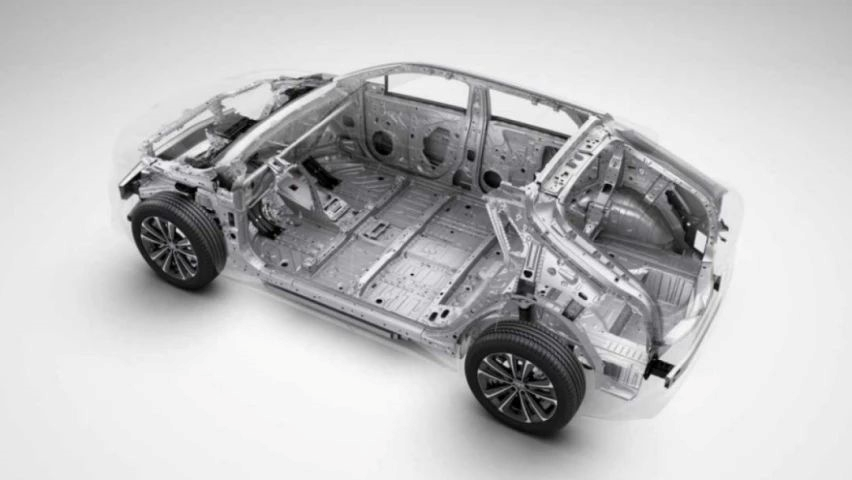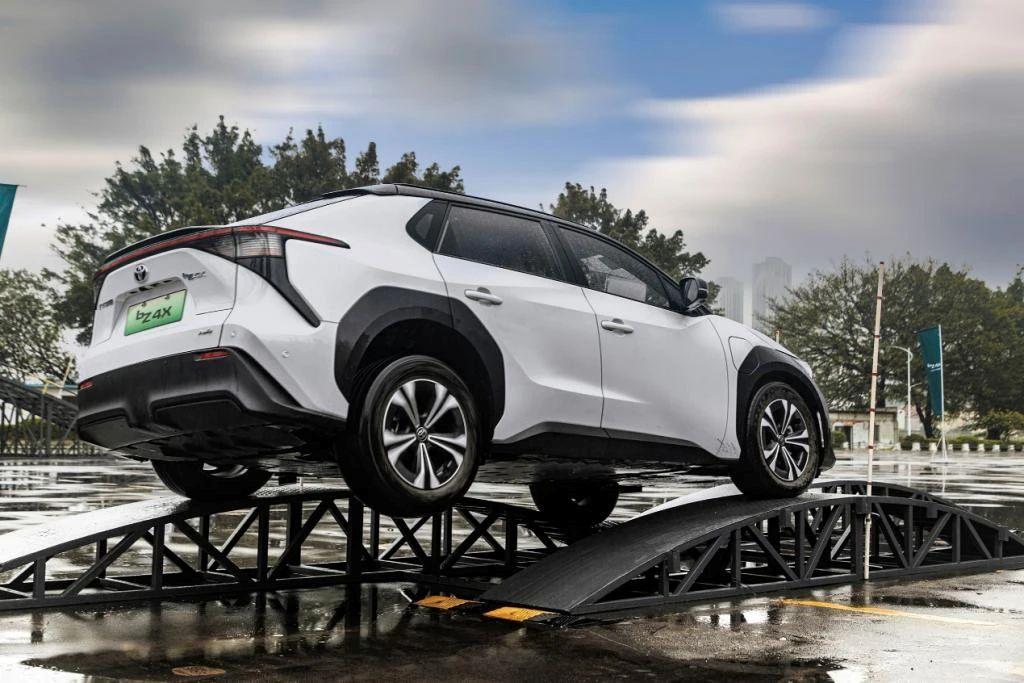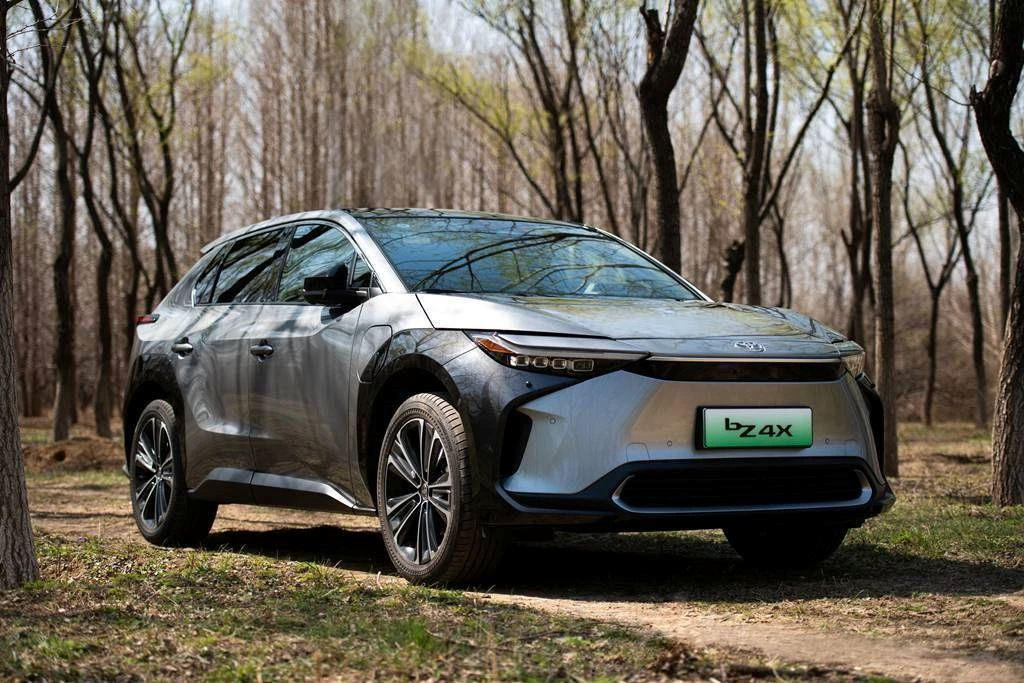Toyota’s bZ4X: Safety and Peace of Mind in China’s Competitive EV Market
Author | Qiu Kaijun
Editor | Qiu Kaijun
The world’s largest automaker has handed in its answer sheet in the fiercely competitive electric vehicle market.
In October, Toyota launched the first vehicle in its pure electric exclusive series, the bZ4X, in China, signaling the company’s commitment to fully promoting the expansion of pure electric products.
Currently, sales of the bZ4X are underway. In the crowded Chinese EV market, how does the bZ4X compete with its rivals?
The answer is: safety and peace of mind.
Based on the e-TNGA concept of a BEV-exclusive platform, the Toyota bZ4X also incorporates Toyota’s long-standing experience in developing and producing hybrid models, particularly in the application of power batteries. Toyota recognizes that only batteries with safe and reliable lifecycles can ensure a satisfying user experience and protect the overall interests of consumers.
Otherwise, even if consumers do not feel it in the initial stage, they may suffer from the decline in cruising range and the plummeting of residual values in the second-hand car market in the later stage.
So how does Toyota do it?
Battery Safety: No Accidents in 25 Years with the Three Electric Systems
When it comes to electric vehicles, many people will say that Toyota is too late to the game.
However, as early as 1996, Toyota launched the RAV4 L EV model. Equipped with nickel-hydrogen batteries, the car can cruise for 190 kilometers on a single charge.
Of course, in the electrification process, Toyota chose to start with hybrids and created the hybrid category as a dominant player. At the same time, Toyota is also exploring pure electric and hydrogen fuel cell vehicles.
As of now, Toyota’s cumulative global sales of electrified vehicles (HEV, PHEV, FCEV, BEV) have exceeded 20 million units.
Those who know the technology will understand that both HEV, PHEV, FCEV and BEV require power batteries, only with varying capacities. That means Toyota has experience in the application of more than 20 million battery packs.
So, how has Toyota performed in the application of power batteries so far?
The answer is that for the past 25 years, Toyota has not had a single accident with the three electric systems.
Toyota has a deep understanding of power batteries, especially after the widespread introduction of hybrid models, and recognizes that only when the battery and the vehicle have the same level of safety, reliability and durability can the consumer experience be consistently satisfying, and electrified models can maintain their value in the second-hand car market.Toyota is known for developing fuel-powered vehicles with high quality, reliability, and durability. When developing electric vehicles, this standard is also maintained.
Therefore, when Toyota began developing pure electric vehicles, it proposed an industry first goal of maintaining a battery capacity of 90% after 10 years. This means that even after 10 years, an electric vehicle with a range of 500 kilometers would still have a range of 450 kilometers.
This is a difficult feat to achieve. On one hand, the industry generally only promises decay of less than 20%; on the other hand, for Toyota itself, this is a huge challenge.
The classic Toyota vehicle, the plug-in hybrid Prius, could only maintain a battery capacity of around 55% in the first generation and around 65% in the second generation after 10 years. The pure electric C-HR and IZOA previously developed by Toyota maintained a battery capacity of approximately 75-80% after 10 years.
The bZ series needs to increase that to 90% while ensuring the safety of the battery pack. The difficulty is imaginable. How can it be achieved?
Toyota’s long-term experience in battery research and development and application is playing a role here. Toyota is taking a multifaceted approach.
Firstly, battery failure often stems from production problems, such as dust and burrs entering the battery, piercing the diaphragm, and causing a short circuit. Therefore, in terms of production, Toyota requires suppliers to improve the cleanliness of factories and reduce pollution of battery components, thereby improving the durability of the battery. Battery suppliers, like CATL who provides batteries to Toyota, produce dedicated lines to match Toyota’s quality requirements.
Secondly, during use, the battery must work in an appropriate temperature environment. Otherwise, once it overheats, it may lead to thermal runaway. Therefore, Toyota redundantly monitors the voltage, current, and temperature of the battery to detect signs of abnormal heating, maintains the best battery temperature, and avoids battery failure.
In any case, the battery will generate heat during charging and discharging, so an efficient heat management system is required. Toyota uses a high-resistance cooling liquid circulation system, which can quickly remove heat even when an electric vehicle is traveling at high speeds or switching repeatedly between fast charging and driving, preventing short circuits and fires.Fourth, the bZ series models are developed based on the e-TNGA architecture. e-TNGA integrates the battery pack with the body design, with the high-capacity battery pack integrated into the floor of the body frame structure. In the event of a collision, the body frame can protect the battery pack and prevent deformation caused by the collision.
It can be seen that Toyota has conducted in-depth research on the mechanism of battery failure, thus able to implement targeted measures to eliminate potential hazards.
Toyota’s battery capacity maintenance target and safety standard are also unparalleled in the industry. The courage is commendable, as even the leading electric vehicle manufacturer Tesla has experienced severe battery degradation under extreme temperatures.
Intelligent Safety: Active and Passive Protection
Ensuring battery safety alone is not enough, as the battery is part of the vehicle and the entire vehicle’s safety must be ensured.
With the introduction of intelligent driving technology, there are more means to ensure vehicle safety. While many automakers emphasize that intelligent driving liberates drivers, Toyota is a pioneer in using intelligent driving to guarantee safety.
The bZ4X model comes standard with over ten intelligent driving assist functions, including TSS.
Among the ten-plus intelligent driving assist functions in the Toyota bZ4X, of course, are functions that can greatly reduce the driver’s pressure. For example, the combination of Dynamic Radar Cruise Control (DRCC) and Lane Tracing Assist (LTA) can enable drivers to drive smoothly on highways and other scenarios with little physical effort.
However, the more abundant and notable functions in the bZ4X’s intelligent driving assist system are the safety-related functions, including Pre-Collision System (PCS), Lane Change Assist (LCA), Lane Departure Alert (LDA), Emergency Driving Stop System (EDSS), Door Open Warning System (SEA), and Predictive Driving Support System (PDA).

One of the most important functions is the Pre-Collision System (PCS). The Pre-Collision System (PCS) is similar to the well-known Automatic Emergency Braking (AEB). Toyota was one of the first brands to apply this to mass-produced vehicles, starting with its Lexus high-end models and gradually expanding to other models, including those sold in China.The reason why the Pre-Collision System (PCS) is important is because it can solve a large proportion of accident problems. According to Toyota’s analysis of traffic accident results, rear-end collisions and vehicle-to-vehicle collisions caused by parking are relatively high. If consumers can help to solve or reduce these two types of collision accidents, this is undoubtedly significant.
The reason for the collision is that consumers cannot find obstacles early or deal with them properly. Toyota’s Pre-Collision System detects objects in front through cameras and millimeter-wave radar. When the speed and distance of obstacles in front reach the warning value, the system will issue an alarm through a buzzer and display.
If the driver does not brake at this time, the system will also automatically brake in advance to slow down the vehicle, ensuring that even if a collision occurs, the damage can be reduced.
In addition to active safety, passive safety such as seat belts, airbags, and anti-collision steel beams are also important, and there is nothing better than collision tests to reflect the level of passive safety.
Toyota bZ4X participated in the most stringent collision test in the world-the European Euro NCAP collision test, and Toyota bZ4X also received a very good 5-star rating in this collision test.
In the most severe pillar collision test for electric vehicles, the bottom of the vehicle did not deform significantly after the collision. Due to the collision buffering structure with a width of 230mm between the bZ4X battery pack on both sides and the body frame, the battery pack is still inside the body frame, and no phenomenon such as the battery pack catching fire occurred. Under the e-TNGA architecture, the main parts of the bZ4X body frame are made of ultra-high-strength hot-stamped steel, which can maintain no deformation during a collision, protecting both the passenger compartment and the battery pack.

In all frontal, frontal partial offset, and pillar collision tests, the seat belts and airbags of the bZ4X functioned normally, protecting the occupants from serious impacts.
With the premise of safety, the bZ4X also has a good driving experience.
First of all, under the TNGA architecture, the overall center of gravity of the car is lowered, and the driver can feel the sense of control of the car following their movements.
Secondly, electric cars are often ridiculed as “grocery cars,” but as an electric SUV, the bZ4X also has two super configurations: X-MODE four-wheel drive off-road assist mode and Grip-Control intelligent creep mode, allowing consumers to go wild even on rainy, snowy, muddy or slippery roads when driving an electric car.
Thirdly, when it comes to the output of electric motor power and the suspension system adjustment, bZ4X does not pursue the abrupt sense of electric drive excessively, but prioritizes comfort, ensuring that drivers and passengers will not experience the “sudden acceleration” of electric vehicles.
Worry-Free After-Sales Service: Ultra-Long Battery Capacity Warranty
Toyota has set a goal of maintaining 90% battery capacity for 10 years, but how can consumers believe that without a solid promise?
Toyota has come up with an unprecedented warranty commitment.

In the three aspects that electric vehicle consumers are most concerned about, Toyota provides a warranty of 10 years or 200,000 kilometers for battery, capacity, and quality assurance. Compared with Tesla, which only provides an 8-year or 160,000-kilometer (or 192,000-kilometer) warranty for batteries and drive units, the three-electric warranty commitment for mainstream domestic electric vehicles is mostly 8 years or 150,000 kilometers.
Toyota has not singled out a warranty requirement for battery cells. In fact, for consumers, the performance of the battery pack ultimately affects the whole vehicle. Thus, ensuring the battery pack is sufficient.
In addition to the warranty commitment, Toyota also provides exclusive emergency services for bZ4X owners at nearly 1,400 dealerships nationwide, including on-site services based on digital keys (such as customer representative maintenance and charging) and 24-hour all-weather emergency rescue, allowing consumers to have no worries in case of emergency.
Toyota’s dare to propose a three-electric warranty commitment beyond the industry reflects Toyota’s confidence in the safety, reliability, and durability of the bZ series of electric vehicles. This also highlights the philosophy of Toyota’s electric vehicles, that is, not to make products that are noisy for a while, but to make electric vehicles that can withstand the test of time. Also, bZ4X’s energy consumption per 100 kilometers is as low as 11.6 kWh, which is excellent performance for a pure electric SUV.

After bZ4X, Toyota has launched the bZ3 model. The bZ series represents Toyota's all-round attack on pure electric vehicles, which will continue to emerge. However, Toyota's pure electric vehicle strategy is long-term oriented. Therefore, the value orientation of the first car bZ4X is safety and peace of mind. With the passage of time, Toyota's pure electric vehicle product strategy will continue to bring positive feedback, helping Toyota maintain strong competitiveness in the pure electric vehicle market.
This article is a translation by ChatGPT of a Chinese report from 42HOW. If you have any questions about it, please email bd@42how.com.
